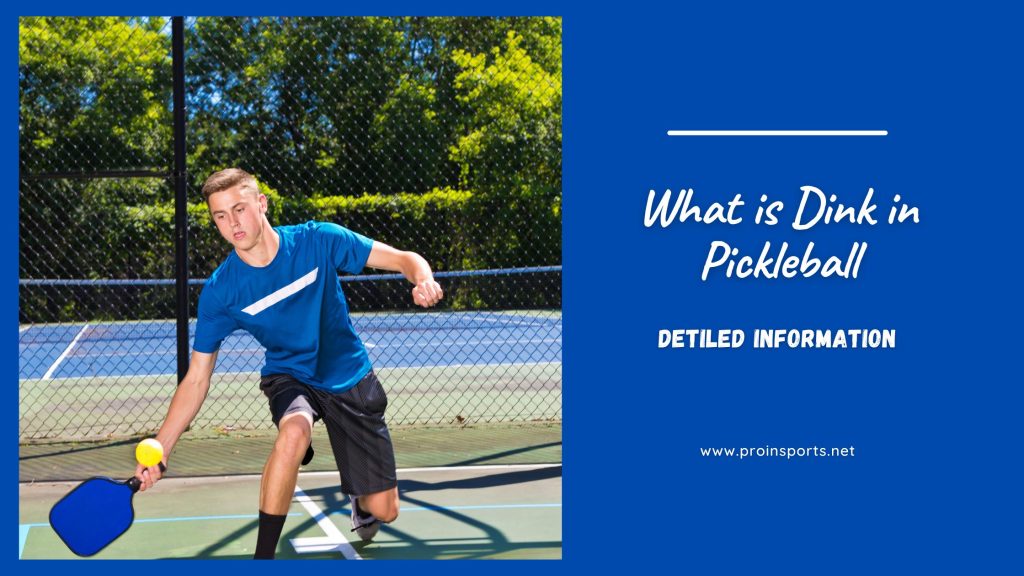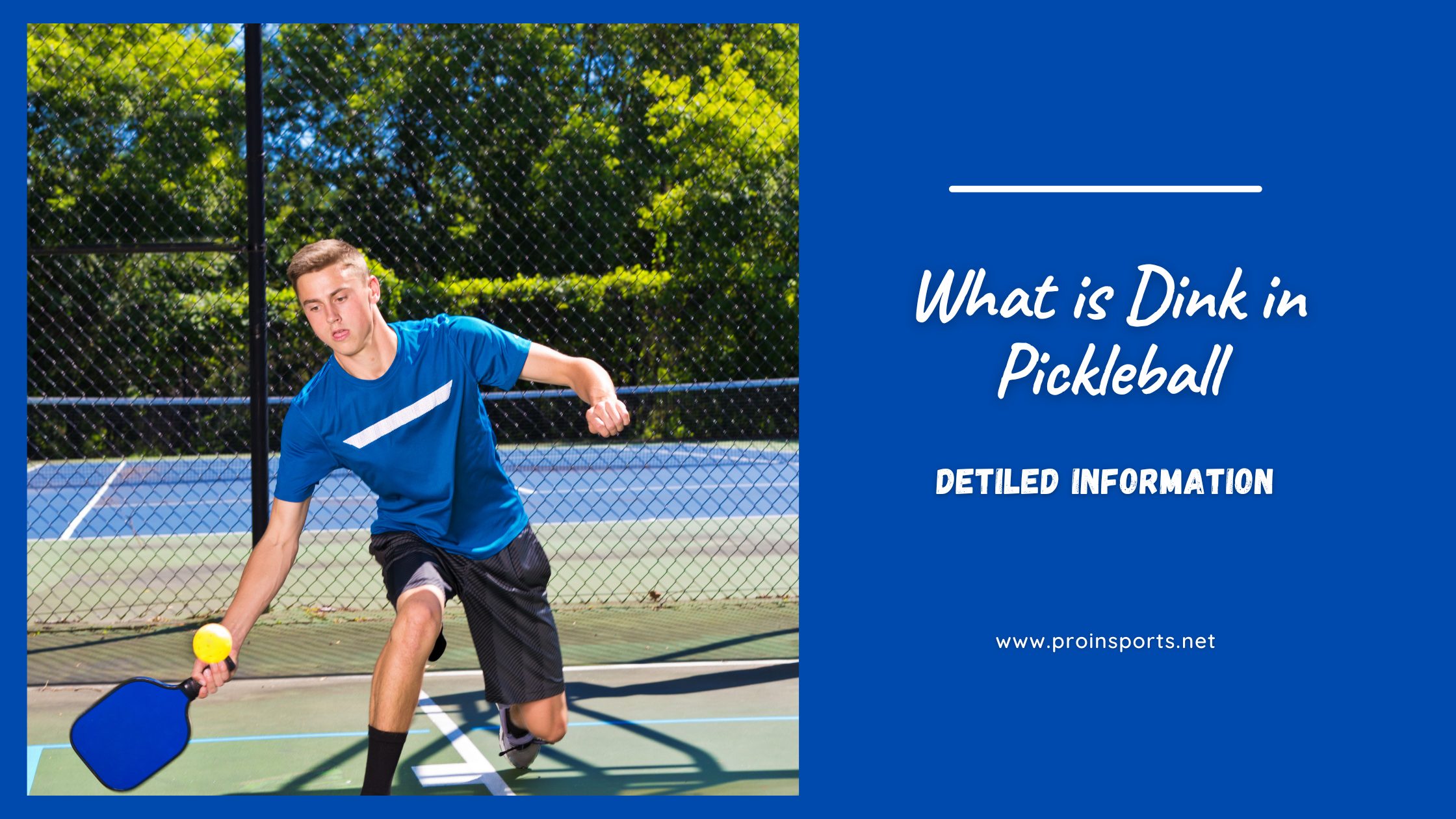
What is Dink in Pickleball
Dink is a term used in the sport of pickleball. It is a shot that hits lightly over the net to the opposing player, usually with an underhand motion. The goal of the dink shot is to keep the ball low and make it difficult for the other player to return. This can be done with either a forehand or backhand swing.
The dink should be placed just over the net so that it lands close to where it was hit from on the opposite side of the court. A successful dink can often win a point or set up an easier shot for your partner if you are playing doubles. Dinking requires good control, accuracy, and excellent timing, which can take some practice to master.
Brief History And Evolution Of Dinking
In the early days of pickleball, dinking was not a technique that was widely used. Instead, players focused on hitting powerful shots and getting points quickly. However, with the growth and development of the sport, dinking began to be incorporated more into the game. Players realized the advantages of using dinks to regulate the game’s pace and create opportunities for more powerful shots.
In the 1970s, advancements were made in the way of different grips, stances, and swing techniques to improve the dinking ability. As a result, it became a vital part of pickleball, and players began to develop new methods to increase their dinking game.
Dinking is now a mainstay in the pickleball game, and people of all skill levels use it. It has become a crucial element of the sport, as players use it to control the game’s tempo and to set up more powerful shots.
Purpose of Dinking in Pickleball
The purpose of dinking in pickleball is to control the game’s pace and force opponents to move to a specific area of the court. The idea behind this shot is to place the ball just over the net, so it drops barely on your opponent’s side, allowing you to maintain control of the game. Doing so can force your opponents to move out of position, setting up for a more powerful shot or strategic placement. Dinking also allows you to assess how well your opponent moves around the court, which can be used as an advantage if they struggle with certain areas. As such, dinking is a key shot in pickleball that is both strategic and tactical.
Types of Dink Shots
There are a few different types of dink shots in pickleball, each with its specific purpose and technique.
How To Dink In Pickleball

Following is the Step-by-Step Guide on how to play dink shots in pickleball
A. The Grip
To ensure success with a dink shot, it is vital to hold the paddle correctly. A popular grip to employ is the “Eastern forehand grip,” where the index knuckle of the hand is situated on top of the handle. This grip provides increased control and accuracy when hitting a dink shot.
B. The Stance
For a successful dink shot, it’s best to stand with your feet slightly wider than shoulder-width apart, with your weight evenly distributed. This stance provides more balance and stability when hitting the dink.
C. The Contact Point
For a successful dink shot, it is essential to make contact with the ball at the ideal spot. Contact should be slightly above the middle of the ball for a dink shot to achieve a lower trajectory and drop quickly on the opponent’s side of the court.
D. The Follow Through
After striking the ball, it is important to complete the stroke properly. A successful follow-through for a dink shot should see the paddle finish up and out, resulting in a lower trajectory and greater accuracy.
Advanced Tips for Playing the Dink Shot
Choosing the Right Angle
To land a successful dink shot, it is essential to select the correct angle. This entails aiming the shot in a particular area of the court where the adversary is less likely to be able to return it. This could be a corner of the court or a spot where the opponent is not in the proper position.
Setting Up the Opponent
Hitting a dink shot can be used tactically to set up a more potent stroke. By striking a dink shot, players can cause opponents to shift their position, leaving space for a more powerful shot like a drive or a smash. Furthermore, by hitting a dink shot, players can also break up the rival’s tempo and make it harder for them to respond to a more aggressive stroke.
Generating Power
Players can get more power out of their dink shots by using the right technique, such as a combination of wrist snap, arm acceleration, and a full body rotation. Even though these shots are low-powered, they can still be executed with greater force by employing the correct technique.
Executing the Shot
To perform a successful dink shot, it is essential to focus on the technique, especially the grip, stance, contact point, and follow-through. Additionally, it is important to be mindful of court positioning and the opponent’s position to select the optimal angle and set up the rival for the next shot.
Are There Any Rules For Dink In Pickleball
Dinking is a legal shot in pickleball and is considered an important part of the game. However, there are certain rules that players must follow when hitting a dink shot.
Are there any benefits of playing dinking in Pickleball
Are There Any Difficulties In Dinking
Common Mistakes When Playing Dink Shot
Not keeping the ball low can allow the opponent to hit a winner easily.
FAQs
Final Verdict
The dink shot is an essential element of pickleball that requires control and accuracy for successful execution. It can win points and set up easier shots for your partner. With some practice, anyone can master the art of the dink shot and become a better pickleball player.
Playing a successful dink shot in pickleball involves a few necessary steps – the grip, stance, contact point, and follow-through. It is essential to use the correct grip, stance, and contact point for maximum accuracy and control and complete the stroke correctly for a successful dink shot. With practice and dedication, players can master the art of the dink and use it to their advantage in pickleball matches.
